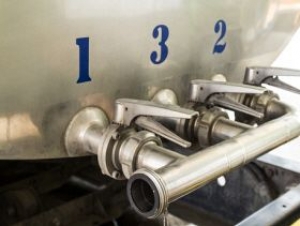World Markets

Agribusiness analysts at Rabobank say there is still “more milk than market” and has delayed hope of “meaningful” increases until the next spring. Upward momentum is expected to properly take hold in the second quarter of 2016, said the Agri-bank in its quarterly dairy report. Accumulated inventories need working through, and this requires China to come back to the market. Meanwhile, milk quota removal in Europe and helpful production conditions have kept production high. On the demand side, “weakness” in China and Russia is seeing buy side and supply side stocks growing, despite other buyers stepping up. Countries previously prices out of the market have been plugging the gap to some extent, such as South East Asian and African countries. Are We Stabilising? Recent results on the Global Dairy Trade would suggest the market is beginning to stabilise, according to AHDB Dairy, the UK levy board. This week’s Global Dairy Trade brought the seventh consecutive negative result, although gains were taken on butter, butter milk powder, cheddar and rennet casein. For demand to improve, Russia and China returning to the market is key. This is according to AHDB Dairy senior market analyst, Patty Clayton, told TheDairySite that, while markets appear to be stabilising, “recovery is another story altogether”. A big reduction in supply and stocks must come, she said, caveating that China could have higher stocks than anticipated if recent US Department of Agriculture reports are correct. If true, this would only delay recovery further. “Stabilisation will happen once we start to see milk production slowing down and falling below last year levels,” said Mrs Clayton. “Rabobank has forecast a recovery for spring next year, this is a bad time to recover because that is when we are moving into peak production.” Meanwhile, the markets are waiting to see how New Zealand opens its 2015/16 season, although its government is forecasting less milk than last year, said Mrs Clayton. Rabobank listed a currently active El Nino as a possible upside influence, potentially pressuring production in Australia and northern Argentina through drought and flooding respectively. “If I were a farmer I would be pessimistic and budget on the low end,” added Mrs Clayton. “GDT is a decent indicator, but whether we have stabilised the market is hard to say, what we can say is that the rate of decline is slowing down.” New Zealand’s substandard pasture conditions and rock bottom price forecasts could mean next season’s production could be lower than last, she added.






















